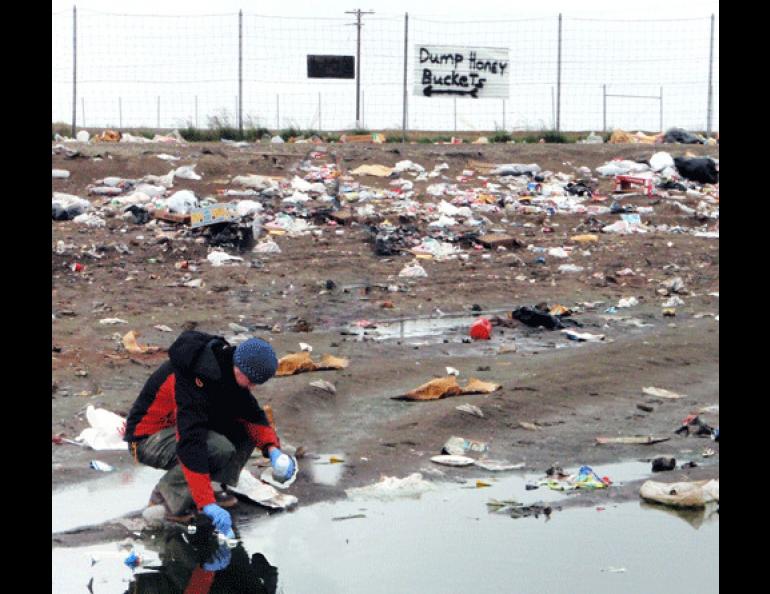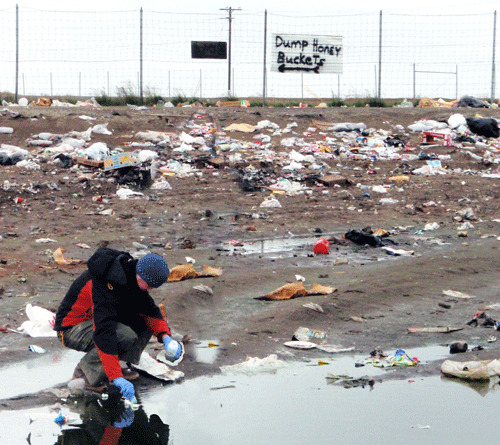
Researchers ponder the fate of village dump toxins
More than 200 villages are spread throughout Alaska, many of them on river systems and low-lying tundra with permafrost beneath it. These conditions have contributed to the problems many villages have with waste disposal; village dumps are often sprawling mounds of garbage spilling into ponds or sloughs. A University of Alaska Fairbanks graduate student is sampling the water and soil around village dumps to see how, or if, pollutants are migrating into the surrounding environment.
Edda Mutter visited seven villages in rural Alaska last summer. She talked to people there and then pulled on her rubber boots and heavy raingear, even though it wasn’t raining. She then walked through village dumps and collected water and soil samples. She found elevated levels of aluminum in the water samples from all seven communities (the civic leaders of which don’t want the village names published), along with high levels of E. coli and other bacteria.
It’s a dirty job (“I make sure I don’t set down my backpack just anywhere,” Mutter said), but she’s hoping to track the fate of toxic substances disposed of in village dumps.
“I want to figure out what’s there, and how these pollutants behave,” she said. “Do they stay in the soil, or bind with water? How will things change with a warmer climate and more permafrost degradation?”
In a study performed by Zender Environmental in 2003, Lynn Zender wrote that 72 percent of village dumps are within about one mile of homes, and at least 30 percent are within one-quarter mile of homes. More than 56 percent of village dumps are seasonally flooded, and 34 percent of dumps are one-quarter mile from a village drinking-water source. About half of isolated Native villages use honey bucket systems, where people carry toilet waste from their homes in five-gallon buckets lined with plastic bags. They often dump the honey bucket contents at the same dumpsite as everything else.
“At some sites, everything goes into the hole,” Mutter said.
Mutter is from a village in Germany about the size of some she is visiting in Alaska. She and her project collaborators at the University of Alaska Anchorage and the Rural Alaska Community Action Program have gotten funding from the U.S. Department of Agriculture, the Environmental Protection Agency and the U.S. Geological Survey. Her Ph.D. advisor, Bill Schnabel, the director of the Water and Environmental Research Center at UAF, said Mutter’s project is the first step of a long-term plan to see what problems exist in solid waste pollution in village Alaska and what solutions might be workable there.
“How much of a problem do we really have?” he said. “Do we have noxious material getting into the water and soil? As researchers, we’re attempting to get in there and get some of these answers. Is this a human or environmental health problem, or is it simply an aesthetic issue?”
Mutter will return to the villages this summer for another round of sampling. She said people she has met there want answers.
“I was fascinated with how much help I got in the communities,” Mutter said. “Some people would go out and help me collect (samples) at the dump site. They’re concerned about where to hunt and pick berries. Sometimes, the most beautiful berries are around the dumpsites."





